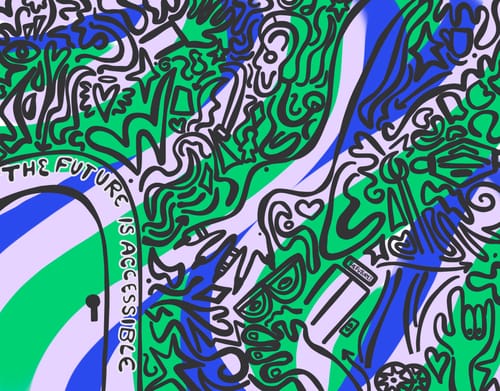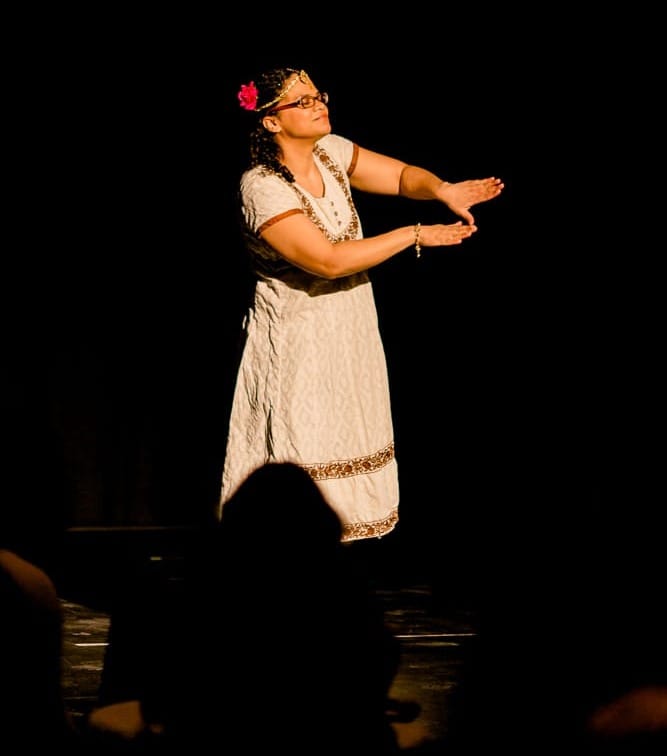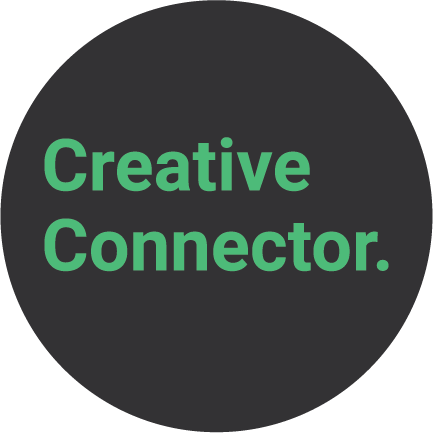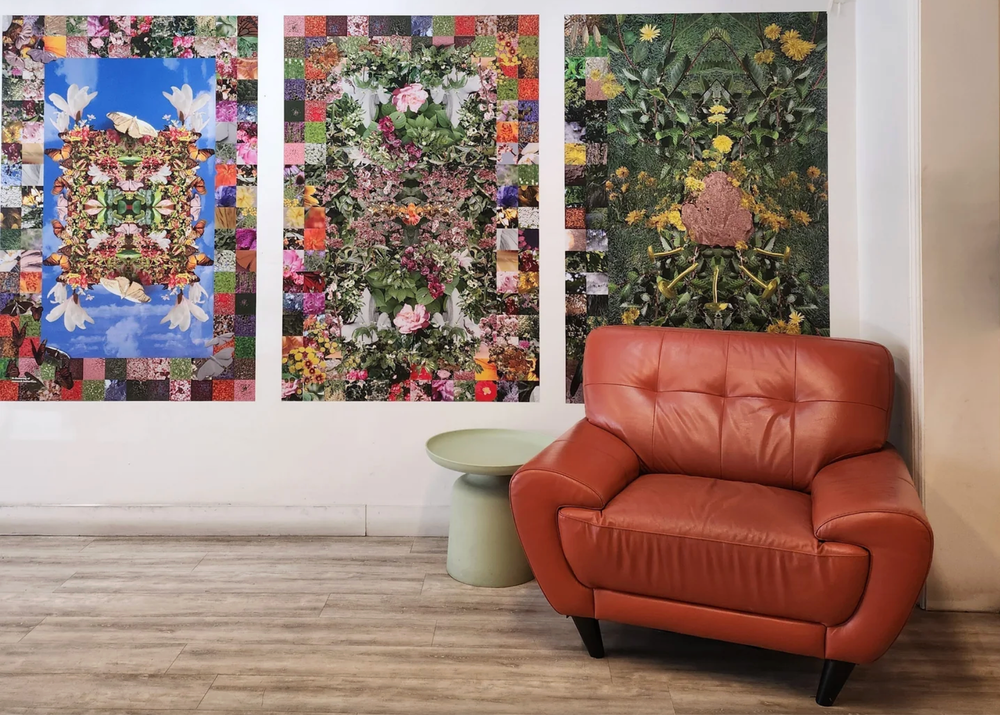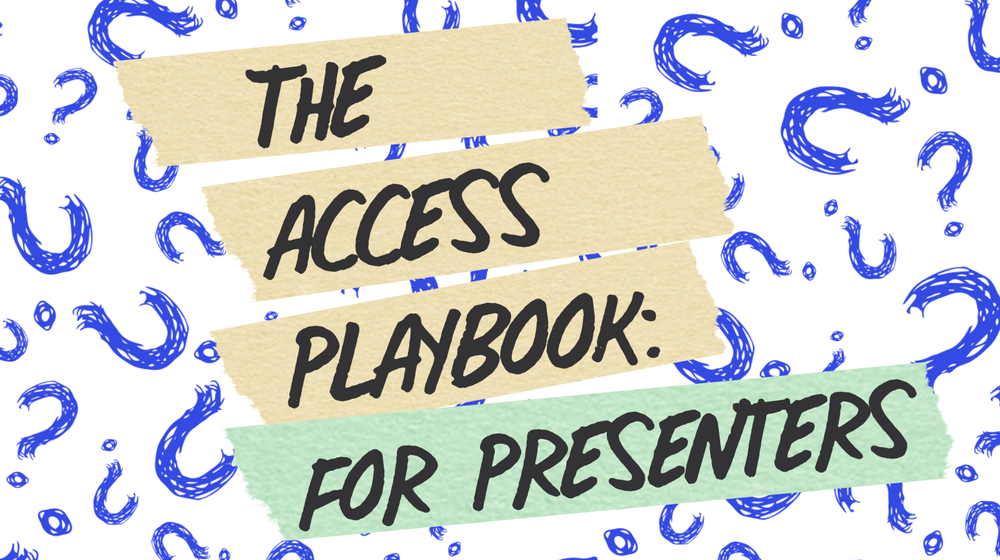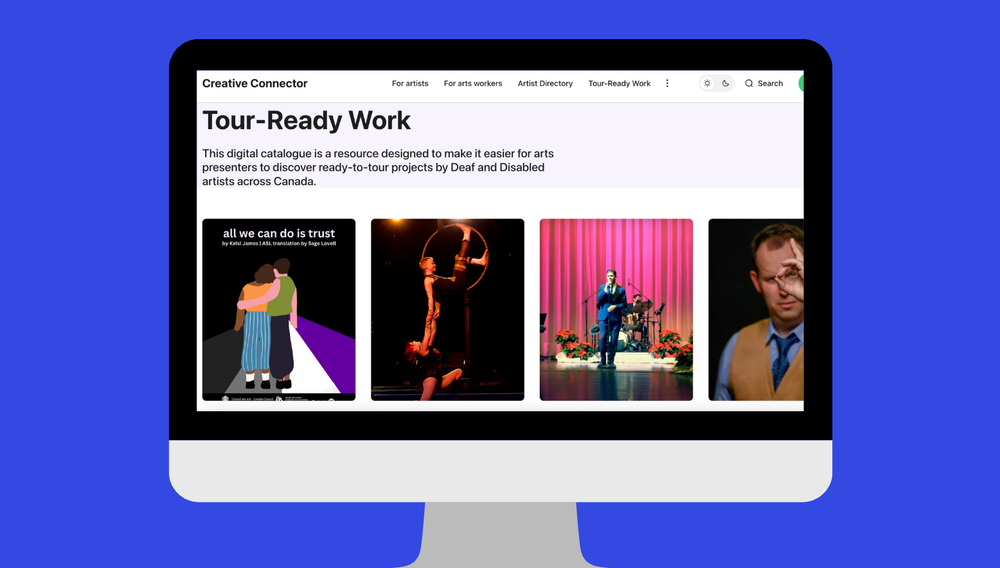Supported by the Government of Canada, The Access Playbook pilot brought together five presenters from across Ontario, including festivals, municipal theatres, and community presenters, to explore one big question:
How can arts organizations meaningfully embed accessibility into their programming, policies, and budgets?
The results demonstrated that when arts leaders are given practical tools, peer support, and time to apply learning in the real world, accessibility becomes not an administrative task — but a creative and sustainable foundation.
The Challenge
Across Canada, Deaf and Disabled artists continue to face barriers that prevent them from participating fully in the performing arts.
Our research revealed that while many presenters want to make change, they struggle with:
- Limited budgets for interpreters, captioning, and adaptive technologies.
- Inaccessible heritage venues and limited local expertise.
- A culture of urgency that leaves little space for flexibility or rest.
- Fear of getting it wrong — leading to hesitation or inaction.
For presenters in Ontario, these challenges are magnified by smaller staff teams, limited access to funding, and fewer local models to learn from.
The Access Playbook Pilot set out to change that.
The Pilot: What We Did
Between May and September 2025, five presenters participated in a six-lesson learning journey that combined self-paced microlearning with online peer group discussions and coaching. The program was designed to meet real-world contexts — short, manageable lessons designed for busy schedules.
Each week tackled a practical theme:
- Grounding Your Why and Understanding Deaf and Disability Rights History
- Diagnosing Venue Readiness and Conducting Access Audits
- Confidently Engaging with the Deaf and Disability Community
- Building Strong Relationships with Artists
- Designing Access in Inaccessible Systems
- Creating and Implementing an Access Action Plan
Participants also had access to one-on-one coaching and a micro-grant to support the implementation of their access action plans.
Key Results
1. Every participant created a tangible Access Action Plan
All five presenters produced detailed plans for their next season, outlining specific commitments such as hiring Deaf and Disabled artists, training volunteers and updating policies and procedures.
Collectively, these plans directed over 50% of micro-grants toward Deaf and Disabled artists and the supports required to present them as part of their program.
2. Confidence and capacity increased across the board
Participants reported significant growth in confidence engaging with the disability community, conducting venue audits, and creating accessible budgets.
- 100% said they felt more confident communicating with artists about access.
- Participants especially valued plain-language templates, sample budgets, and an access cost guide that made access feel doable rather than overwhelming.
“This is a great program and is a great entry point for any presenters/people interested in accessibility in the arts. It helped reframe some things and brought up barriers in the arts scene that I hadn't thought of before, and it was very useful to have everything delivered in a well-delivered package.”
3. Peer learning built community and accountability
Presenters often work in isolation, but the cohort model created connections and shared learning. The evaluation found engagement was highest during group discussions, where presenters swapped solutions and built lasting relationships.
As one participant shared, the Playbook was:
“an incredibly supportive learning environment that is inspiring us with exciting new ideas and approaches for creating a more caring festival community.”
This network has continued beyond the pilot, forming the foundation of an ongoing peer support circle for pilot presenters.
4. Immediate Impact and Plans
Across Ontario, the impact is already visible:
- Guelph, Ontario — Creating an Accessible Stage for an Inclusive Choir
One municipal theatre is pursuing structural change to make its stage accessible for an inclusive 2SLGBTQIA+ choir, demonstrating how access improvements can open performance spaces to entire communities of artists who were previously excluded. - Ajax, Ontario — Piloting an Access Guide and Programming Deaf Artists
Another presenter is developing a publicly available access guide for audience and artist use, while programming Deaf artists with professional ASL interpretation — embedding access as part of artistic curation, not an afterthought. - Kingston, Ontario — Artist-Led Access at a Community Festival
A local festival is launching artist-led access innovations, including a calming tent with mental health supporter workers and a volunteer access team. These initiatives model community care and prove that meaningful access doesn’t always require major infrastructure changes. - Port Hope, Ontario — Embedding Access into Organizational Systems
One organization is embedding accessibility into every layer of its operations through staff and board training and by revising contracts to include accessibility commitments — creating long-term, systemic change. - Fergus, Ontario — Expanding Music Accessibility for Artists with Hearing Loss
A presenter in Fergus is pioneering a combined workshop and concert designed to expand music accessibility for artists with hearing loss, opening new creative pathways for Deaf and Hard-of-Hearing musicians.
These examples show what can happen when presenters have the confidence, tools, resources and peer support to move from awareness to action. As these plans move forward, they are setting new benchmarks for accessibility in arts presentation — tangible proof that with the right guidance, every community can lead change.
5. The Playbook fosters long-term change
Beyond tools and training, the pilot changed mindsets. Presenters began to see accessibility not as a checklist, but as a creative practice that strengthens artmaking.
“A lot of the work you can end up doing as a presenter is ticking boxes. It’s horrible, but you find yourself doing it. It illustrates black and white and no presenter out there thinks this way, in my opinion. The Access Playbook sheds light on the grey area and illuminates all that is beautiful inside it while clearly articulating what matters and why.” — Jeff Bray, Cultivate Festival Director and Pilot Participant
The Bigger Picture
The pilot's results reflect a deeper truth: presenters aren’t pursuing accessibility only because it’s the right thing to do — they see it as a pathway to stronger, more resilient organizations.
Pilot participants recognized that accessibility strengthens relationships and builds community trust. For presenters, that trust translates directly into ticket sales, new partnerships, and wider community engagement.
Evaluation results also found that presenters are developing transferable skills — planning, budgeting, and communication frameworks that improve their overall capacity to manage diverse projects.
Accessibility, in this sense, is not a cost but an investment: it expands audiences, deepens loyalty and trust, and reduces last-minute production costs that come from reactive problem-solving.
For funders and policymakers, this pilot offers a clear signal: embedding access pays dividends — socially, artistically, and economically. When presenters integrate accessibility into their everyday planning, they build both equity and efficiency into the arts ecosystem.
What's Next
The next phase of the Access Playbook will expand nationally, with new cohorts launching in 2026.
Learn more about how to get involved: creativeconnector.art/the-access-playbook-info

